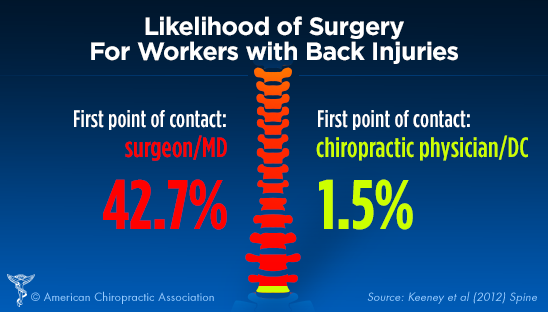Indicators You Might Demand Soft Tissue Treatment For Discomfort Alleviation
Indicators You Might Demand Soft Tissue Treatment For Discomfort Alleviation
Blog Article
Write-Up Composed By-Damgaard Hemmingsen
If you've been handling relentless muscle stress or stiffness, you could be wondering if there's a better service than just non-prescription discomfort relief. Restricted variety of motion and ongoing pain after an injury can seriously impact your every day life. These indications often indicate that your body requires more targeted treatment. So, just how do you recognize when it's time to think about soft Tissue therapy? Let's discover some essential indications that could surprise you.
Persistent Muscle Mass Tension and Rigidity
If you frequently find yourself really feeling limited and stiff after a lengthy day, you may be taking care of persistent muscle tension. This discomfort can creep in from everyday tasks, bad pose, or perhaps stress.
pop over to this web-site may observe that certain locations, like your neck or shoulders, really feel especially tight, making it difficult to unwind. Ignoring this tension can result in more considerable concerns, influencing your overall wellness.
You may discover it challenging to take a break or really feel tired regardless of obtaining adequate sleep. Incorporating normal stretches or mild motion can aid relieve some of this stiffness, but it mightn't suffice.
If the tension lingers, looking for soft Tissue therapy can give the alleviation you require, assisting to recover balance and comfort in your body.
Limited Series Of Motion
A limited series of activity can considerably impact your day-to-day activities and total lifestyle. You could discover straightforward jobs, like reaching for a product on a shelf or bending down to tie your shoes, coming to be increasingly difficult.
This constraint often stems from limited muscles, joint concerns, or previous injuries, making motion uncomfortable or perhaps uncomfortable. When you can't move easily, it affects your capacity to exercise, play sports, or engage in leisure activities you delight in.
Soft Tissue therapy can assist reduce these issues by targeting the underlying muscular tissue tension and enhancing flexibility. If you observe stiffness, discomfort, or a lack of ability to fully prolong or bend your joints, it deserves considering therapy to recover your wheelchair and boost your overall health.
Persistent Pain After Injury
Experiencing consistent pain after an injury can be aggravating and devastating. difference between butt and hips might've thought the pain would fade with time, but when it lingers, it might signify a deeper problem.
This continuous pain might hinder your daily activities and influence your lifestyle. You might see rigidity, swelling, or level of sensitivity in the afflicted location, which can restrict your capability to move openly.
If you've tried rest, ice, or over-the-counter medicines without success, it's vital to take into consideration soft Tissue treatment. This method targets the muscular tissues, tendons, and tendons surrounding the injury, advertising healing and discomfort alleviation.
Don't let persistent pain control your life-- choose professional aid to return on track and regain your movement.
Conclusion
If you're experiencing persistent muscle tension, restricted variety of motion, or relentless discomfort after an injury, it's time to think about soft Tissue therapy. Ignoring https://lorenzoqkfyt.theobloggers.com/39289114/soft-tissue-therapy-supplies-relief-from-muscle-tension-and-discomfort-yet-what-one-of-a-kind-methods-does-it-make-use-of-to-boost-your-well-being-discover-more-inside can result in further pain and prevent your daily activities. As opposed to relying exclusively on non-prescription medicines, looking for specialist help can efficiently resolve your signs and symptoms and advertise healing. Don't await your discomfort to aggravate-- take action currently and improve your quality of life with the right treatment.
